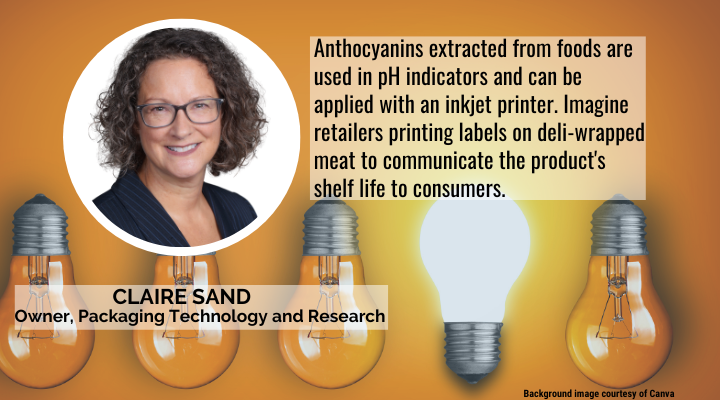Food packaging science responded in 2022 as supply chains were strained and food and packaging costs increased. This resulted in a renewed emphasis on using packaging to protect and ensure the authenticity of food ingredients and packaging. Food packaging science has accelerated conversions to metalized film, increased active packaging (modified atmospheres in antimicrobials) and vented packaging to facilitate thawing at retail (aka slack) to reduce food waste and costs. Furthermore, the FDA’s “New Era of Smarter Food Safety” declaration ushered in a wave of intelligent packaging.
Food packaging science will accelerate further in 2023 as food and packaging supplies continue to be threatened by war, famine, natural disasters, and global-localization imbalances. On the positive side, this investment in food packaging science will optimize food distribution, address food justice, and prevent more food waste. This lowers our food system’s environmental and social impact, which is progress!

Here are my five predictions for food packaging science in 2023.
1. Antimicrobial packaging gets normalized
Antimicrobial packaging has been used for many years in the food packaging industry. We see them used behind the scenes to extend the shelf life of:
- Berries (sulfur dioxide to inhibit mold);
- Bread and fruits (nisin, cinnamon, SoFresh, and lower carbon-chain fatty acids to inhibit mold growth); and
- Poultry (zinc oxide, grapefruit seed extract, oregano to inhibit Listeria).
2023 will showcase antimicrobial packaging to prevent food waste further, improve food safety, and extend supply chains. As a result of Covid-19, consumers are more comfortable with antimicrobials and consumers are prepared for clear label communication on how antimicrobial packaging can retain the shelf life of the foods they purchase.
2. Intelligent packaging aligns
Intelligent packaging takes many shapes. Of these, pH-reliant intelligent packaging is a wonderfully simple way to assess food quality and safety. This is because pH is both an indicator of and restrictor of bacteria growth, and because some bacteria cannot grow at specific pHs, microbial growth alters the pH. Major progress has been made in packaging that contains pH indicators within the film structure or as a label. Interestingly, anthocyanins extracted from foods are used in indicators and can be applied with an inkjet printer. Imagine retailers printing labels on deli-wrapped meat to communicate the product’s shelf life to consumers.
3. Right-sizing and consumer-focused package design
Price-Pack architecture has hit many categories, such as candy, cereal, and cookies. However, this resizing has not connected yet with other categories.
This changes in 2023 and when it does, a window into package design innovation will open. For example, design to replace the awkward retail-made meal kits will be enabled by secondary-stage manufacturing. Another example is in reseal innovation. Reseal emerged as a nice-to-have in the early 1990s, and this prevented consumer food waste because it allowed consumers to reseal shredded cheese through an inline applied zipper feature adequately. Some 30 years later, in 2023, consumers will see package design innovation to reduce their “after it is open” waste. As brands struggle to achieve “just the right size for everyone” in PPA, package design finesse to enable reseal is a means to allow consumers to take what is needed and securely reseal the package to protect food.
4. Science and relationships
Intense consolidation in both the food and packaging industries has resulted in many large packaging converters and machinery suppliers competing for large brands’ business. However, many second-tier packaging companies work with smaller food companies out of this fray. These market dynamics will prompt values-based investment by small and mid-size packaging converters and machinery supplier companies. In addition, we will see greater alignment with specific universities to implement focused innovations. The fact that so many examples are starting to emerge makes teaching the Packaging Value Chain at CalPoly a joy!
5. International consortiums
The abundance of food packaging research worldwide, combined with employees who work untethered remotely, is fueling multinational research consortiums on food packaging science. Fortunately for innovation, optimized research focused on addressing an immediate need will replace self-imposed silos traditionally within university research programs. This is consistent with the artificial intelligence (AI)-driven design of work protocols in developing new medicines, and it holds great promise for advancing critical areas of food packaging science and focusing on food waste prevention. In addition, international cooperation in meeting the common need for packaging to protect food will advance understanding different cultures.
2023 will be a fantastic year thanks to these five food packaging science breakthroughs!
Claire Sand has 30+ years of experience in industry and academia. She’s owner of Packaging Technology and Research and Gazelle Mobile Packaging and an Adjunct Professor, CalPoly, Michigan State University, and the University of Minnesota. You can reach her at www.packagingtechnologyandresearch.com or [email protected].